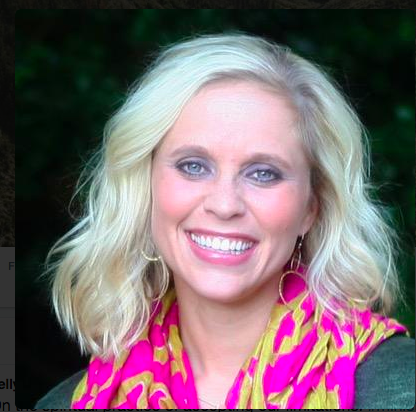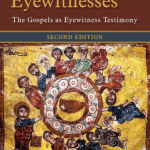 After the storm, by Kelly Edmiston who is a minister at the First Colony Church of Christ in Houston Texas.
After the storm, by Kelly Edmiston who is a minister at the First Colony Church of Christ in Houston Texas.
“The storm is over,” I heard the news anchor proudly announce with a great level of enthusiasm. Thousands of us had been glued to the television for hours on end trying to understand as the meteorologist explained Harvey’s projected path. We bit our fingernails anxiously as local city officials tried to estimate how many neighborhoods would be destroyed if the rain continued and who would be the next victims in the storm’s path. It has been over a month now since Hurricane Harvey hit the city of Houston and the news anchor is right, the storm is over. But for many homes, the roofs are still caved in and the water is still standing rotting the floors and molding the walls. Some homes have not been touched since the hurricane ravaged them. From the roof to their foundation, nothing has been spared. For many, the storm is not over, it has just begun.
Trauma is like this. Trauma is what remains “after the storm” is over.[1]
Trauma and traumatic stress are particularly relevant topics for where we find ourselves globally, communally, and for many, personally. Consider the victims across the globe who have suffered through the upheaval of their homes, cities and lives caused by natural disasters. Consider the Las Vegas shooting victims and their families. Consider those of us who have suffered as we have watched our faith in this great nation and its leaders deteriorate and begin to rot before our eyes with each passing news story and tweet. Consider the variety of personal circumstances such as raising a child who is critically ill or the loss of a spouse. These examples can leave us in a whirlwind of traumatic stress. My aim in this blog series is to shed some light on the realities of trauma and traumatic stress.[2]
The first resource I consult is Shelley Rambo’s book Spirit and Trauma. She says that trauma is what lives on in the “middle space” after the traumatic experience is over but before restoration occurs.[3]
She points out that the believing community has typically understood death and life to be two events on opposite ends of a spectrum. In the Christian narrative, we have traditionally understood the cross (death) and the resurrection (life) as two events on the opposite ends of a spectrum. In this framework, death ends when new life begins. But Rambo argues that this linear understanding does not speak to the human experience of trauma. In the aftermath of trauma, death is forever mixed up with life. The death we experience, whether literal or figurative, may always be present, and life takes on a new and different definition. She identifies this space, as the “middle space.” For Houstonians, the traumatic event may be over but we (and many homes) are still in shambles.
She says that “the good news of Christianity for those who experience trauma rests in the capacity to theologize this middle.” One image that she utilizes, which has been particularly meaningful in the aftermath of Hurricane Harvey, is the image of water gushing from the side of Jesus on the cross.[4]
“But when they came to Jesus, they saw that he was already dead, so they didn’t break his legs. One of the soldiers, however, pierced his side with a spear, and immediately blood and water flowed out.” John 19:33-34 NLT
In John’s gospel, water is used as an image for life, birth and the Holy Spirit. (John 3:5) But here, it is mixed with blood, it makes up the ‘fluid of death.’ [5] Rambo writes that this “births a distinctive understanding of the Spirit.[6]
If trauma is what remains in the middle, after the death, violence or devastating experience, then for John (and Rambo) the Spirit is who remains. The Spirit inhabits the middle space between the cross and resurrection in the body of Jesus.
Here is the good news of Christianity: That God is found, living through the Holy Spirit, right smack dab in the middle of the messy fluid mixture between death and life.
Whatever is living on “after the storm” for you, be it literal shambles of a wrecked home or be it some form of fear or anxiety, you should know that as destroyed as the terrain of your life may be, it is also Spirit occupied territory.
Disclaimer #1
This series is on healing from trauma and traumatic stress. It is inspired by own experiences, one in particular that I describe in the third post. I offer my own story and theological reflections not as an expert or teacher but as a sojourner alongside anyone living in the aftermath of trauma. While my prayer is that this series in helpful in shedding light on the realities of trauma, it is not meant to be instructive or prescriptive. Every person’s journey is radically different due to the great majority of traumatic experiences and I am, in no way, simplifying that. For many, living in the “middle space” between death and life is a life long journey. This series is a tribute to such a journey.
Disclaimer #2
The views and opinions expressed in this article are those of the author and do not necessarily reflect the policy or position of the First Colony Church of Christ.
[1] Shelley Rambo uses the language “after the storm” in her book, Spirit and Trauma.
Shelly Rambo, Spirit and Trauma: A Theology of Remaining (Louisville, Ky.: Westminster John Knox Press, 2010).
[2] See Disclaimer #1 on series intent
[3] Shelly Rambo, Spirit and Trauma: A Theology of Remaining (Louisville, Ky.: Westminster John Knox Press, 2010).
[4] Ibid. Chapter 3
[5] Ibid. 81.
[6] Ibid. 82.












